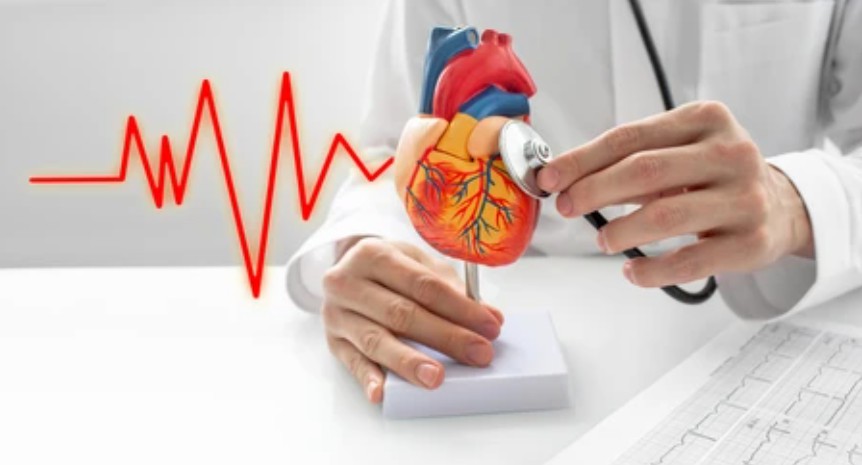Overview of Cardiovascular Disease Models in Drug Discovery
Cardiovascular diseases (CVDs) remain a significant global health concern, contributing to a substantial burden of morbidity and mortality. The development of effective therapeutic strategies is crucial for combating these diseases and improving patient outcomes.

Cellular Models
Cellular models serve as essential tools in cardiovascular disease research, allowing scientists to examine disease mechanisms and test potential therapeutic interventions.
- Primary cells. They derived from cardiac tissue, blood vessels, or relevant cell types play a pivotal role in studying cardiovascular diseases. These cells closely mimic the physiological characteristics of native tissues, enabling researchers to investigate disease pathways and evaluate the efficacy of drug candidates. However, primary cells have limitations in terms of availability, lifespan, and inter-donor variability, which necessitate careful experimental design and data interpretation.
- Immortalized cell lines, such as cardiomyocytes or vascular smooth muscle cells, offer the advantage of indefinite proliferation while retaining certain physiological characteristics. These cell lines provide a continuous and reproducible source of cells for cardiovascular disease modeling, facilitating high-throughput screening of potential drugs. However, it is crucial to acknowledge that immortalized cell lines may not fully recapitulate the complex cellular interactions present in native tissues.
Tissue Engineering
Tissue engineering approaches have revolutionized cardiovascular disease modeling, enabling the creation of three-dimensional (3D) structures that closely resemble native tissues.
- Organoids. They are self-organizing, 3D structures derived from stem cells or primary cells that mimic the structure and function of specific organs. In cardiovascular research, cardiac organoids can be generated to study disease mechanisms, drug responses, and personalized medicine approaches. These miniature organs offer a more accurate representation of human physiology than traditional 2D cell cultures, making them invaluable tools for drug discovery and development.
- Microfluidic systems. These systems allow precise control over fluid flow, shear stress, and cell-to-cell interactions, enabling the study of disease progression and drug responses under physiologically relevant conditions. Microfluidic models of blood vessels, heart tissue, and cardiac-on-a-chip systems have been developed to investigate cardiovascular diseases and evaluate the effectiveness of therapeutic interventions.
Small Animal Models
Small animal models, particularly mice and rats, are widely employed in cardiovascular disease research due to their genetic tractability, cost-effectiveness, and ease of handling.
- Mouse models. Genetically modified mouse models have significantly contributed to our understanding of cardiovascular diseases. For instance, mice with targeted mutations in genes relevant to CVD can mimic human disease phenotypes, aiding in the identification of therapeutic targets. Additionally, mouse models of myocardial infarction and atherosclerosis have been instrumental in preclinical evaluation of potential drug candidates.
- Rat models. Rats, particularly spontaneously hypertensive rats and models of myocardial infarction, have been extensively utilized in cardiovascular research. These models exhibit disease characteristics similar to those observed in humans, thereby enabling a more accurate evaluation of drug efficacy and safety. Moreover, rat models offer larger body sizes, facilitating detailed physiological assessments and surgical interventions.
Large Animal Models
Large animal models, such as pigs and non-human primates, hold significant translational relevance due to their anatomical and physiological similarities to humans. They provide a bridge between small animal studies and clinical trials, offering insights into the safety and efficacy of drug candidates.
- Porcine models. Pigs have cardiovascular systems that closely resemble human physiology, making them valuable for preclinical studies. Porcine models have been employed to investigate heart failure, myocardial infarction, and valvular diseases. These models can facilitate the evaluation of drug delivery strategies, device implants, and tissue engineering approaches before advancing to human trials.
- Non-human primate models. Non-human primates, such as monkeys, share a high degree of genetic and physiological similarity with humans. They are particularly useful for studying complex cardiovascular diseases, including hypertension, atherosclerosis, and heart failure. Non-human primate models offer insights into disease mechanisms, treatment responses, and long-term safety profiles, which are critical steps in the drug development process.
Creative Bioarray Relevant Recommendations
| Product/Service Types | Description |
| Cardiac Cells | Creative Bioarray can offer several types of human cardiac cells, which can be used in assays of adhesion, migration, angiogenesis, regenerative medicine, drug screening, and disease modeling. |
| Cardiovascular Disease Models | At Creative Bioarray, we have successfully developed various cardiovascular models to help develop drugs for cardiovascular diseases. The application of animal models helps increase our understanding of cardiovascular diseases and provides new approaches to improve the diagnosis and treatment of the diseases. |
| Cardiovascular Diseases Modeling and Assay Services | Creative Bioarray is offering cardiovascular disease modeling and assay services based on human stem and iPS cells to help our customers open the door for generating new mechanistic insight into cardiovascular disease pathophysiology and improving the process of drug development. |
| 3D Cardiovascular Toxicity Service | Creative-Bioarray offers the opportunity for highly predictable pre-clinical cardio-toxicity testing to help our customers reduce both the cost and duration of bringing a new drug candidate to market. |